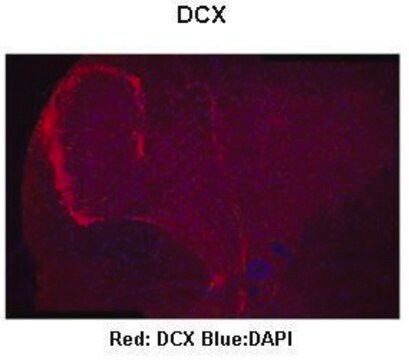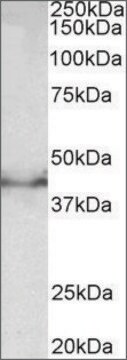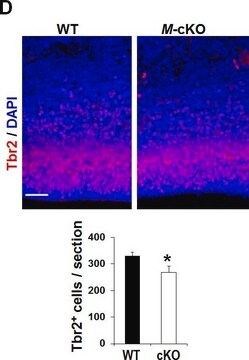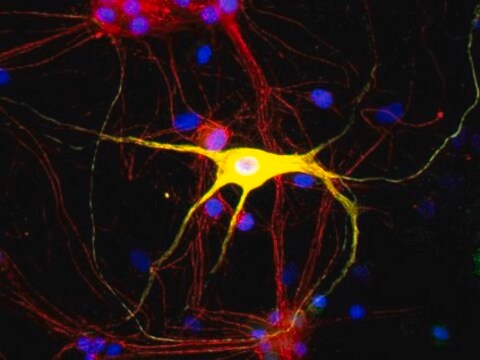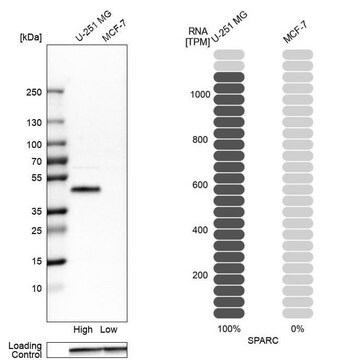MABN707
Anti-DCX Antibody, clone 2G5
clone 2G5, from mouse
Synonim(y):
Neuronal migration protein doublecortin, Doublin, Lissencephalin-X, Lis-X, DCX
About This Item
Polecane produkty
pochodzenie biologiczne
mouse
Poziom jakości
forma przeciwciała
purified antibody
rodzaj przeciwciała
primary antibodies
klon
2G5, monoclonal
reaktywność gatunkowa
mouse, human
metody
flow cytometry: suitable
immunocytochemistry: suitable
immunohistochemistry: suitable
western blot: suitable
izotyp
IgG1
numer dostępu UniProt
Warunki transportu
wet ice
docelowa modyfikacja potranslacyjna
unmodified
informacje o genach
mouse ... Dcx(13193)
Powiązane kategorie
Opis ogólny
Immunogen
Zastosowanie
Immunofluorescence Analysis: A 1:200-1,000 dilution from a representative lot detected DCX in HepG2 cells.
Flow Cytometry Analysis: A 1:200-400 dilution from a representative lot detected DCX in non serum starved SK-N-SH cells.
Optimal working dilutions must be determined by end user.
Neuroscience
Developmental Neuroscience
Jakość
Western Blotting Analysis: A 1:500-2,000 dilution of this antibody detected DCX in mouse heart lysate.
Opis wartości docelowych
Postać fizyczna
Przechowywanie i stabilność
Komentarz do analizy
Mouse heart lysate
Oświadczenie o zrzeczeniu się odpowiedzialności
Nie możesz znaleźć właściwego produktu?
Wypróbuj nasz Narzędzie selektora produktów.
polecane
Kod klasy składowania
12 - Non Combustible Liquids
Klasa zagrożenia wodnego (WGK)
WGK 2
Temperatura zapłonu (°F)
Not applicable
Temperatura zapłonu (°C)
Not applicable
Certyfikaty analizy (CoA)
Poszukaj Certyfikaty analizy (CoA), wpisując numer partii/serii produktów. Numery serii i partii można znaleźć na etykiecie produktu po słowach „seria” lub „partia”.
Masz już ten produkt?
Dokumenty związane z niedawno zakupionymi produktami zostały zamieszczone w Bibliotece dokumentów.
Nasz zespół naukowców ma doświadczenie we wszystkich obszarach badań, w tym w naukach przyrodniczych, materiałoznawstwie, syntezie chemicznej, chromatografii, analityce i wielu innych dziedzinach.
Skontaktuj się z zespołem ds. pomocy technicznej